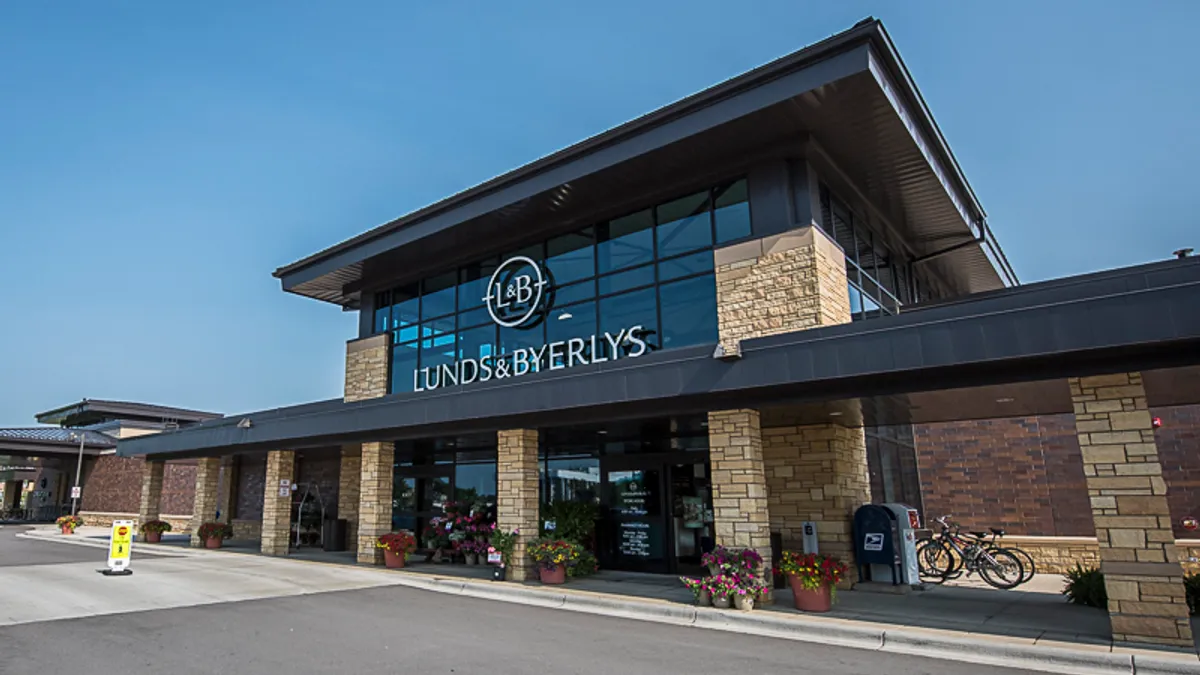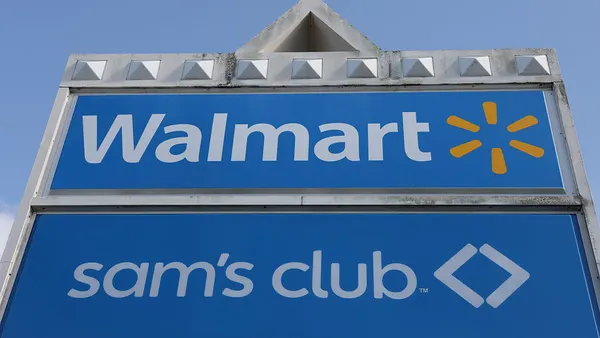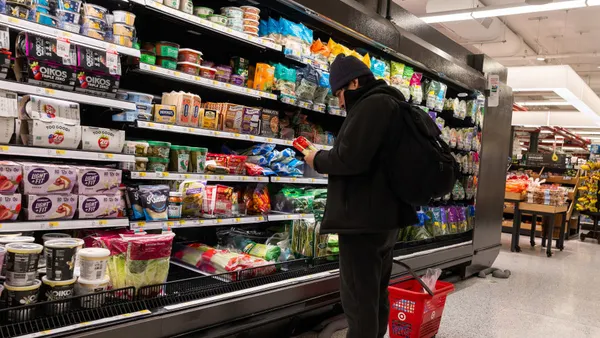Dive Brief:
- Workers at Twin Cities grocery chain Lunds & Byerlys will soon begin scanning shelves using handheld scanners outfitted with software from Pensa Systems to measure operational performance, according to a press release issued on Tuesday.
- The program, which Pensa says is a cheaper alternative to aisle-scanning robots and cameras, uses computer vision and artificial intelligence to determine inventory levels throughout the day. Scanning a 70-foot aisle can happen in as little as 12 seconds, said Mark Abernathy, head of market development with Pensa.
- The program provides “shelf intelligence data” that can help Lunds & Byerlys improve omnichannel performance, said Abernathy, and has costs offset through a data-sharing agreement with CPGs.
Dive Insight:
Lunds & Byerlys' new scanning tool is the latest example of a retailer turning to advanced technology in order to closely track stock levels and shelf performance. By adding digital scanning tools, retailers aim to gather store-level data that’s on par with what they gather through e-commerce platforms, which log customers’ every click.
Some retailers have utilized aisle-scanning robots or fixed cameras that look out over their stores. Pensa’s scanning system relies on handheld devices that many retailers already have on hand, like phones, tablets and scanners, to log assortment levels. An employee can walk down the aisle “at a comfortable or brisk walking pace” with a device pointed at the shelves, said Abernathy, who formerly worked as Kroger's head of e-commerce operations.
The resulting video clip then gets uploaded to the cloud and analyzed, with artificial intelligence predicting stock levels in between scans, which can happen every hour or just once or twice a day, depending on the company’s needs.
This “device agnostic” approach is more cost-effective than relying on dedicated cameras or robots, said Abernathy. It’s also faster and more comprehensive than the “gap scans” employees often perform using traditional handheld scanners, he noted.
To further offset costs and monetize the program, Lunds & Byerlys has agreed to let CPG firms pay for access to its shelf data, which those companies can then use to improve demand forecasting, supply chain operations and planogram compliance, Abernathy noted.
By having a granular view into shelf-level performance, grocers can track out-of-stocks and improve their merchandising practices. They can also provide online shoppers with visibility into inventory levels, reducing the substitutions that frustrate many of them, and also help order pickers locate products in stores.
Getting brands involved can also improve operations overall by giving all stakeholders access to operational data, Abernathy said.
One potential complicating factor for the system is the supply chain disruption that’s continuing to roil the industry. Even if the system is able to identify out-of-stocks, stores may not have product on hand to fill the gaps. Abernathy, in response, noted that feeding shelf-level data to CPGs can help them improve their supply chain operations by being able to more accurately predict demand.
Grocers are increasingly turning to automated solutions and looking to maximize their store labor. They’re also trying to make their operations more efficient and turning to alternative revenue streams like digital media in order to help offset the high costs of online shopping and other digital investments.
“The bottom line is really pressured, and with the regional [grocers] that's really even more pronounced,” said Abernathy.














